Smoking brisket is an art form that has been perfected over generations. This cut of meat, known for its rich flavor and tender texture, can be a challenging endeavor for even seasoned pitmasters. However, with the right techniques and a bit of patience, anyone can master the art of smoking brisket. Here are some expert secrets that will help you achieve mouthwatering results every time.
Choosing the Right Brisket

The journey to perfect smoked brisket begins with selecting the right cut of meat. Brisket comes in two main parts: the flat and the point. The flat is leaner, while the point is fattier and more flavorful.
What to Look For:
- Grade: Opt for USDA Prime or Choice brisket for better marbling and tenderness.
- Size: Choose a brisket that is between 10-14 pounds for even cooking.
- Marbling: Look for good intramuscular fat, which will render during smoking and keep the meat moist.
Preparing the Brisket
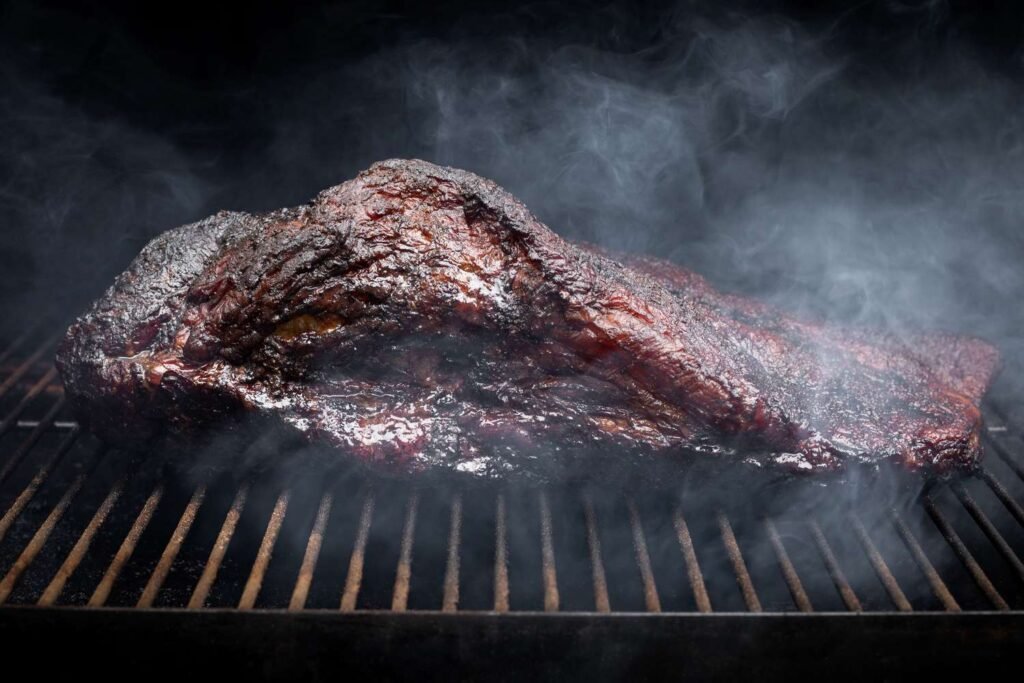
Proper preparation is crucial for a successful smoke. This involves trimming, seasoning, and allowing the brisket to come to room temperature before smoking.
Trimming:
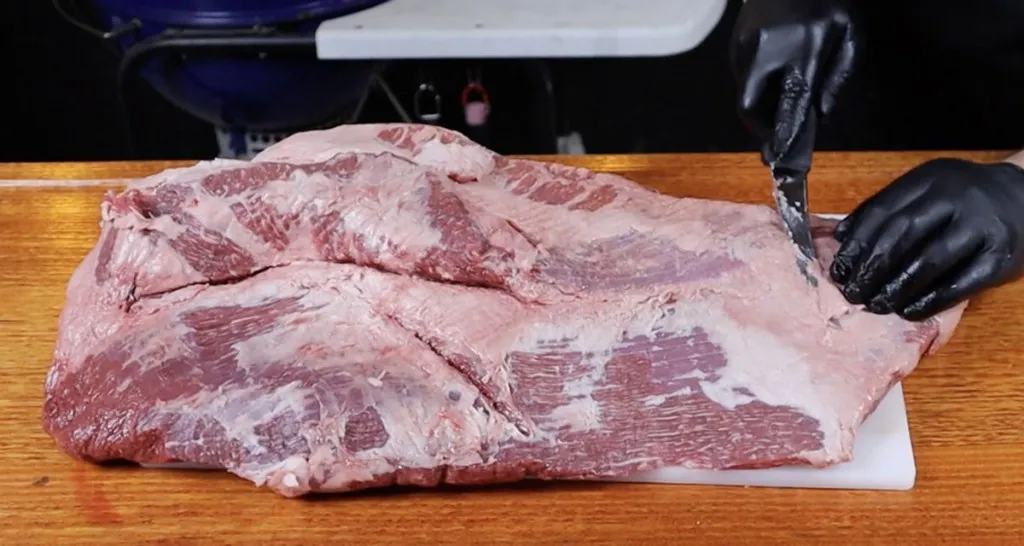
- Fat Cap: Trim the fat cap to about ¼ inch thick. This helps the fat render and baste the meat.
- Silver Skin: Remove any silver skin and hard pieces of fat, which don’t render well during smoking.
Seasoning:
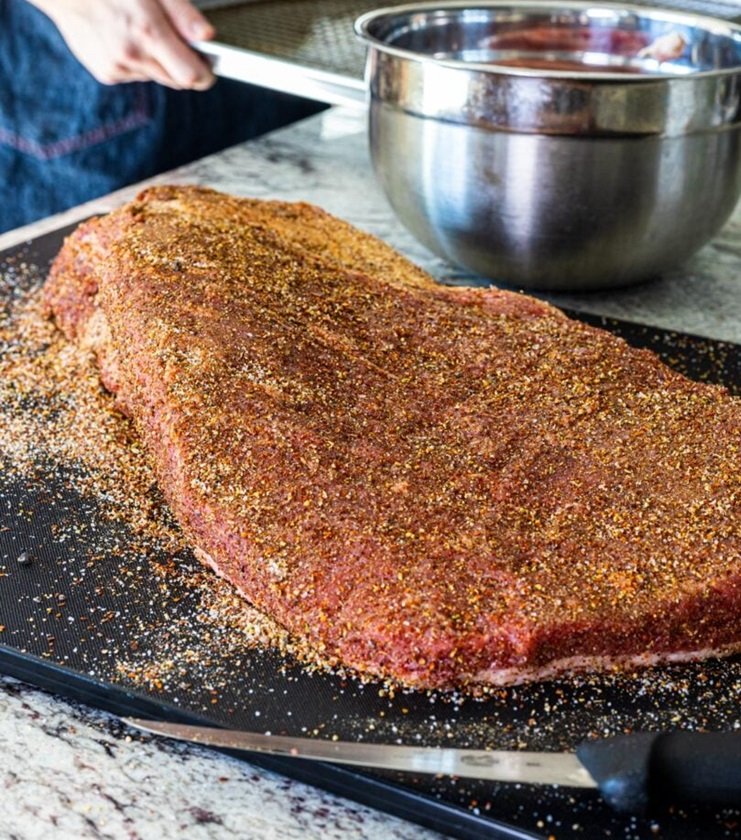
- Rub: Use a simple rub of kosher salt, black pepper, and garlic powder. This allows the flavor of the beef to shine.
- Rest: Let the seasoned brisket rest at room temperature for about an hour to allow the rub to penetrate the meat.
The Smoking Process

The smoking process is where the magic happens. Maintaining the right temperature, using the right wood, and monitoring the meat are all critical steps.
Temperature:
- Optimal Range: Smoke the brisket at a consistent temperature between 225°F and 250°F.
- Monitoring: Use a reliable thermometer to monitor both the smoker and the internal temperature of the brisket.
Wood Choice:
- Types of Wood: Oak, hickory, and pecan are excellent choices for smoking brisket. They provide a robust flavor without overpowering the meat.
- Chunks vs. Chips: Use wood chunks for a longer, steadier smoke. Chips burn faster and can be used to add a quick burst of flavor.
Smoking Time:
- Low and Slow: Plan for about 1 to 1.5 hours of smoking per pound of brisket.
- Stall: Be prepared for the stall, where the internal temperature plateaus around 150°F-160°F. This can last for several hours but is normal.
The Texas Crutch
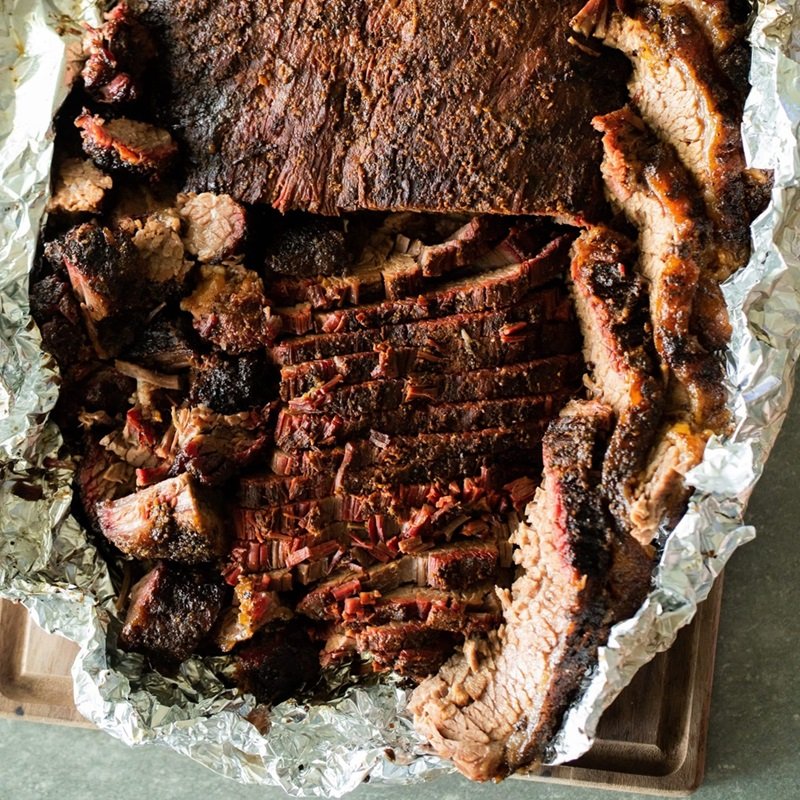
To overcome the stall and ensure a tender brisket, many pitmasters use the Texas Crutch. This involves wrapping the brisket partway through the smoking process.
Wrapping:
- When to Wrap: Wrap the brisket when it reaches an internal temperature of 160°F-170°F.
- Material: Use butcher paper or aluminum foil. Butcher paper allows some smoke to penetrate, while foil creates a tighter seal for faster cooking.
Finishing the Brisket
Knowing when to pull the brisket off the smoker is crucial. The goal is to achieve a perfect balance between tenderness and juiciness.
Checking for Doneness:
- Temperature: Aim for an internal temperature of 200°F-205°F in the thickest part of the brisket.
- Probe Test: Insert a probe or skewer into the meat. It should go in with little to no resistance, like butter.
Resting:
- Resting Time: Let the brisket rest for at least 1 hour, preferably 2 hours, in a cooler or warm oven. This allows the juices to redistribute throughout the meat.
- Wrap: Keep the brisket wrapped while resting to maintain its temperature.
Slicing the Brisket
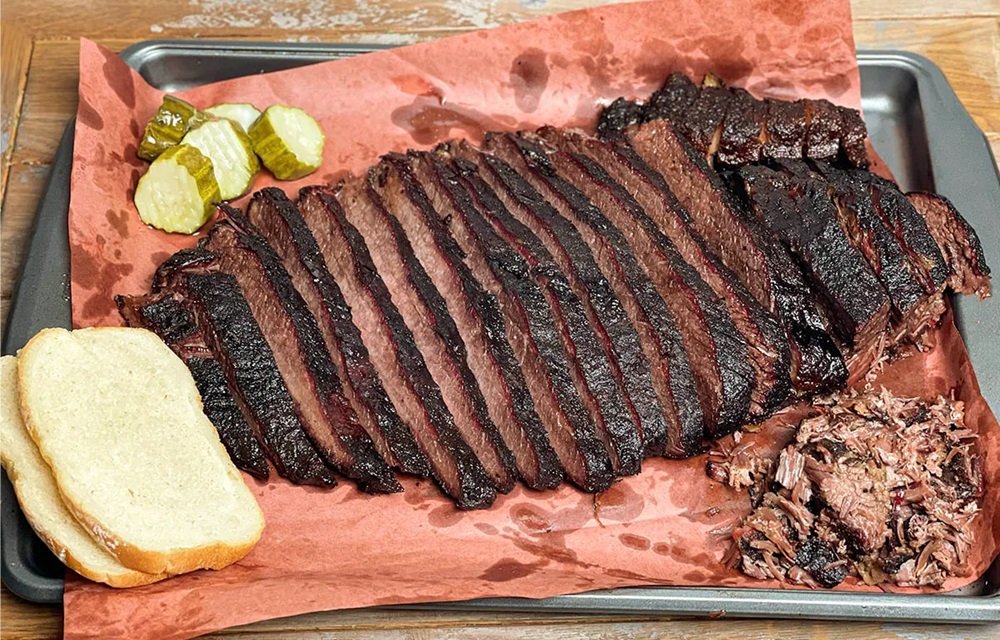
How you slice the brisket can make a significant difference in the final presentation and texture. Always slice against the grain for the best results.
Technique:
- Identify the Grain: Look at the direction of the muscle fibers and slice perpendicular to them.
- Thickness: Aim for slices that are about ¼ inch thick for the flat and slightly thicker for the point.
Serving:
- Presentation: Arrange the slices on a platter, showcasing the beautiful smoke ring and bark.
- Sauce: Serve with or without barbecue sauce. The best-smoked brisket stands on its own but can be complemented with a good sauce.
Tips and Tricks
Every pitmaster has their own set of tips and tricks for achieving the perfect brisket. Here are some additional secrets that can elevate your smoking game:
Moisture Management:
- Water Pan: Place a water pan in the smoker to maintain humidity and prevent the meat from drying out.
- Spritzing: Periodically spritz the brisket with apple juice, beef broth, or a vinegar-water mixture to keep it moist.
Flavor Enhancements:
- Marinades: Consider marinating the brisket overnight in a mixture of beef broth, Worcestershire sauce, and spices for added flavor.
- Injection: Injecting the brisket with beef broth and seasonings can add moisture and depth of flavor.
Consistency:
- Practice: Perfecting smoked brisket takes practice. Keep a journal of your smoking sessions to track what works and what doesn’t.
- Patience: Don’t rush the process. Good things come to those who wait, especially when it comes to smoking brisket.
Smoking brisket is a labor of love that requires time, patience, and attention to detail. By following these expert secrets, you can achieve a tender, flavorful brisket that will impress your friends and family. Remember, each brisket is unique, and part of the fun is experimenting with different techniques to find what works best for you. So fire up that smoker, embrace the journey, and enjoy the delicious results of your hard work. Happy smoking!
